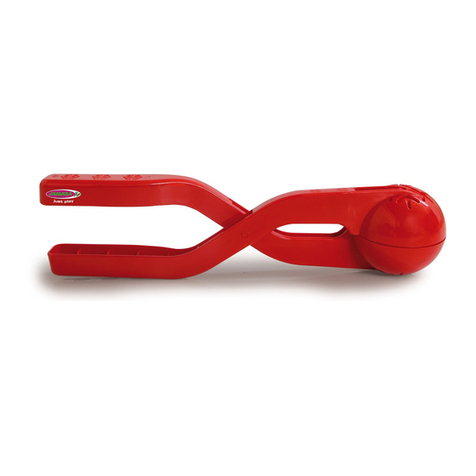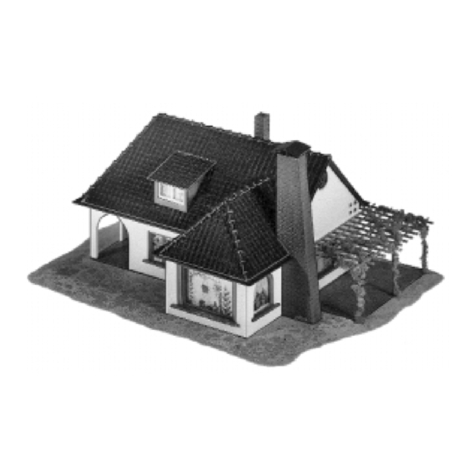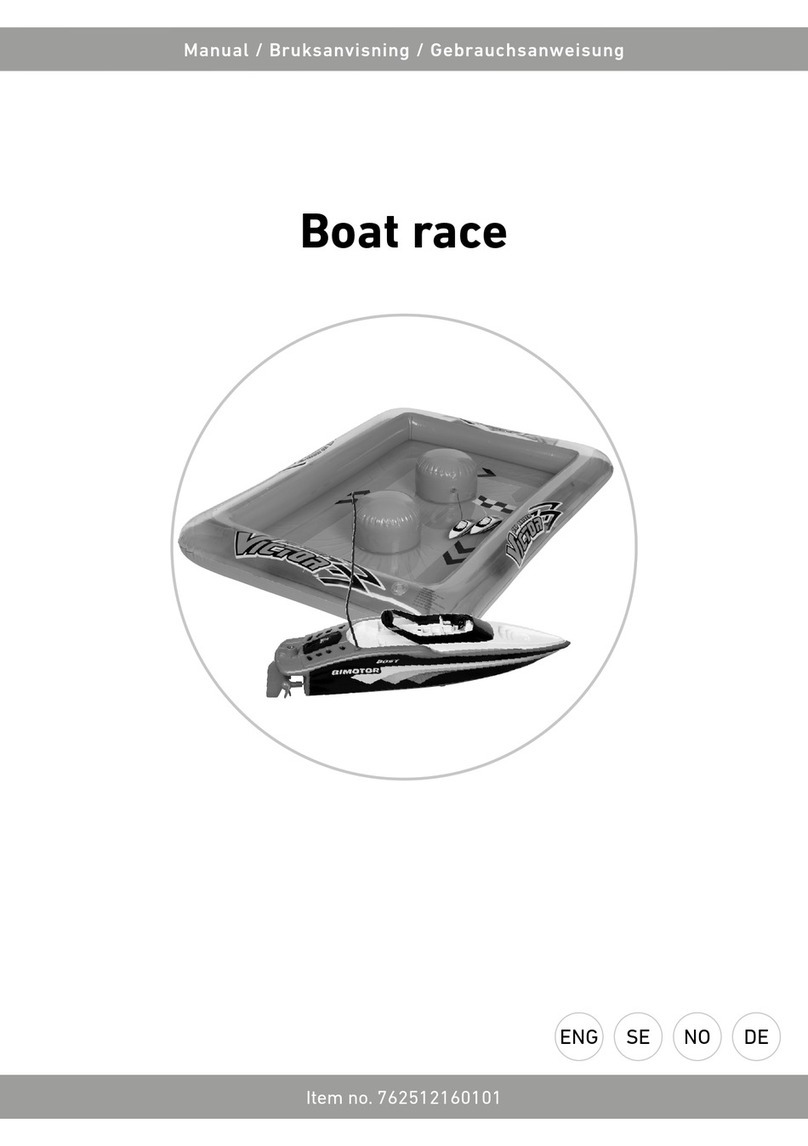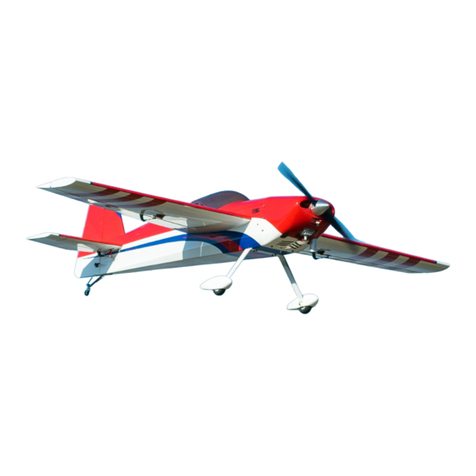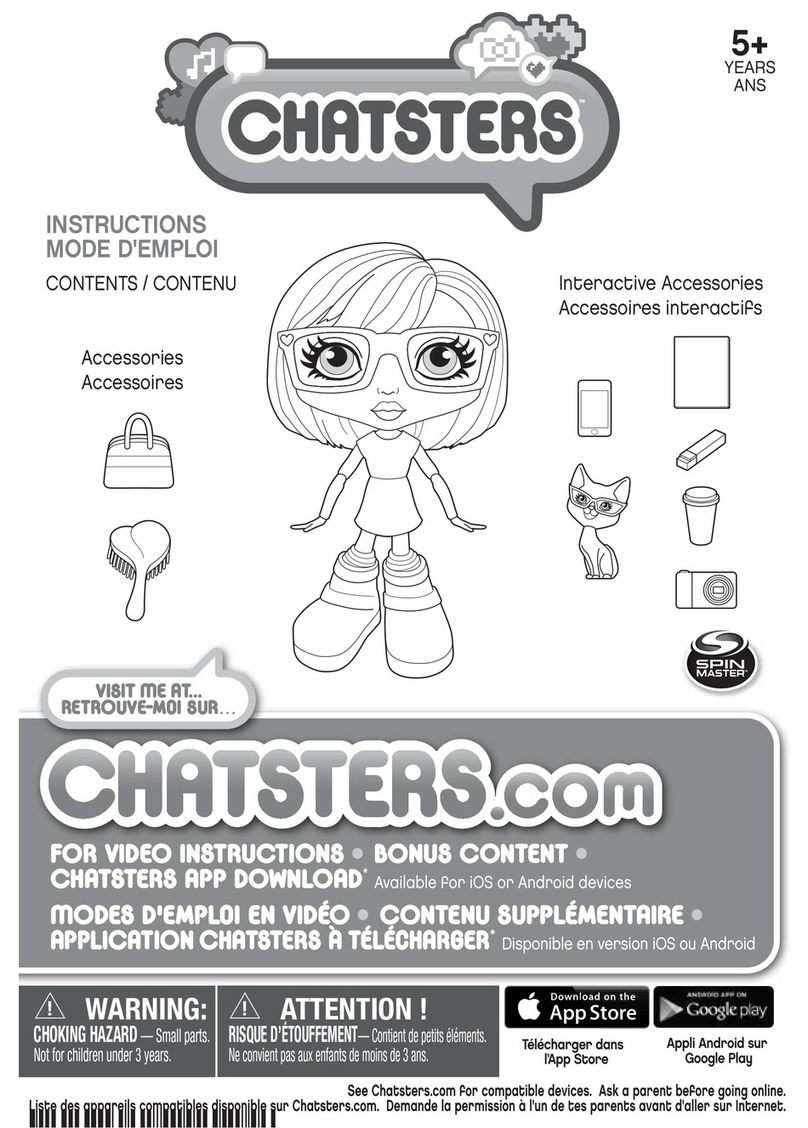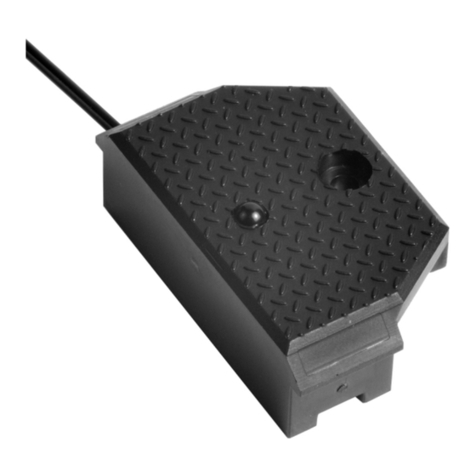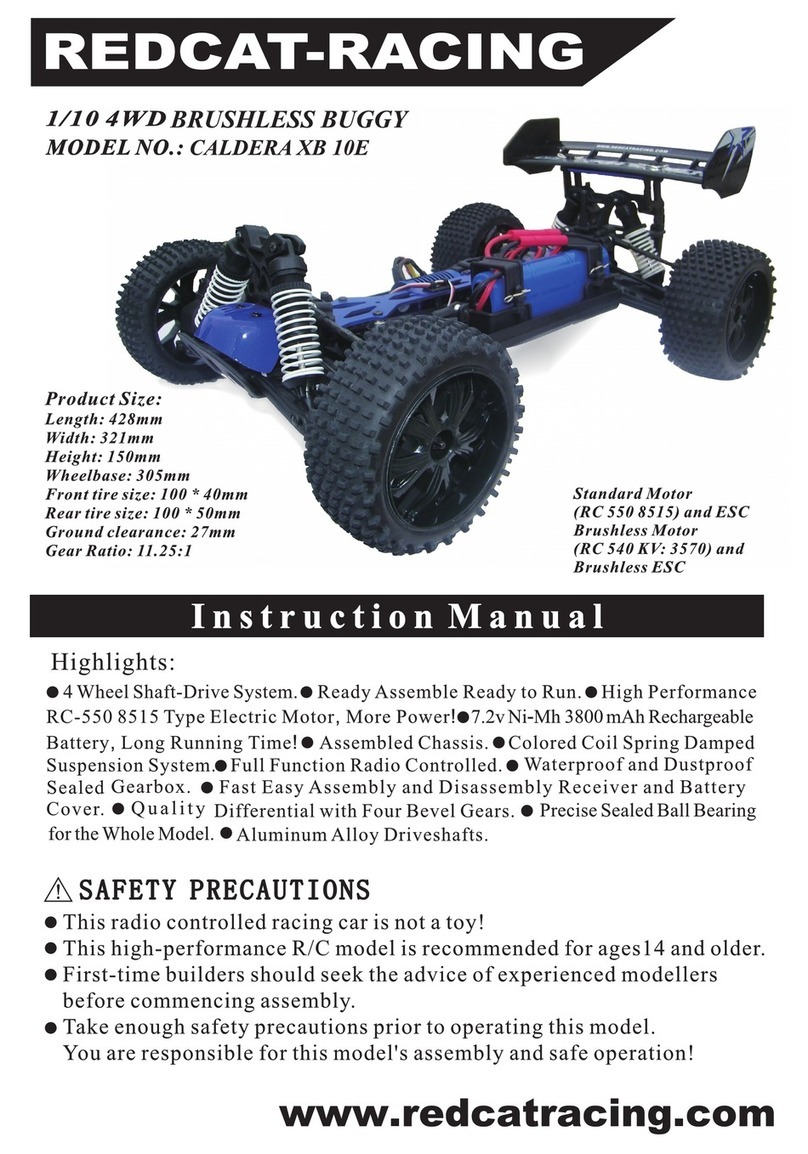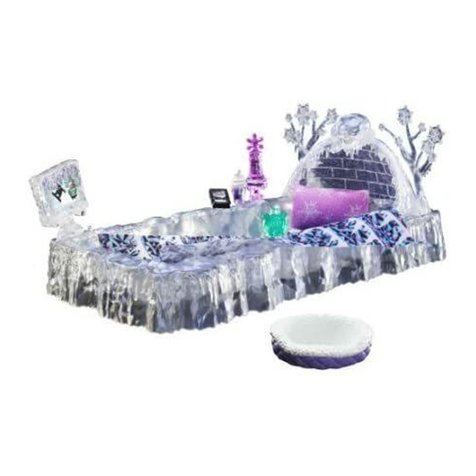Aviattic ANSALDO A.1 BALILLA User manual

“ANSALDO A.1 BALILLA”
BUILD LOG

1/32 Ansaldo Balilla A1
Firstly, thank you for buying this Aviac kit!
Much love and aenon was lavished on its creaon and we very much look forward to seeing customers geng the best from the parts
and enjoying the process…
Having tried numerous approaches to a build guide or a set of instrucons it seemed a modellers approach to the various challenges best
suited this kit. This guide is an edited and enhanced version of Rons original prototype build log (hence the poor quality of some of the
photos) and is to be read in conjuncon with the kits booklet, photo cards and website galleries. Our sincere thanks to Dave Hooper for
his considerable eorts in presenng this guide.
There will be links posted on the website (www.aviac.co.uk) to other modeller’s builds as they appear on the various modelling forums
etc. Between those sources and careful examinaon of each stage and the parts concerned you should gain a good understanding of this
wonderful lile aeroplane and its construcon before you start.
With the recent advances in resin quality (and we have used the best) we hope you will not nd the build too much dierent from
regular plasc, though some “resin rules" sll apply…
PLEASE NOTE THE FOLLOWING...
1) Only remove the parts from their casng blocks when you are ready to use them. Store them carefully, away from heat and light.
2) Any warpage of parts that may have occurred in storage can be reced by immersion in very hot water and leaving on a at
surface to dry.
3) Wash all parts thoroughly in soapy water, or beer sll, household de-greaser or alcohol.
4) Resin dust is harmful if inhaled. Wear suitable parcle mask or respirator when cung, scraping or sanding parts.
5) For best results prime all parts before paint or decal applicaon. In the case of decals a gloss surface, polished and dust free is
essenal.
TOOLS AND EQUIPMENT
You will noce a variety of drill bits are required, these should be
part of your tool collecon and are a great help in any modelling
project.
A selecon of razor saws, wet and dry paper, needle les, etc.
Cyano glues of various drying mes, white or “PVA” glue, two-part
epoxy may be a preference and “Gorilla" glue has proved excellent
for aaching photo-etch over the varnish-sealed decals.
A PE folding tool will be an essenal aid to obtaining a clean fold on
the photo etch parts.
As Ron explains in his notes, you may want to add soldering to your
skill set. It certainly creates a beer bond and shouldn’t take long to
master on some scrap P/E…
AVIATTIC DIGITAL AND PRINTED DECALS
If are not familiar with “Aviac” digitally printed decals and you
wish to use the wood grain, linen and camouage supplied, please
read the instrucons provided. The various shapes need to be cut
exactly to the indicated outlines as they do not trim well whilst
wet.
Apply ONLY to gloss prepared surfaces.
The Pheon Models designed markings decals are applied in the
tradional way, warm water should be sucient to make them
conform, decal solvents are not recommended.
GOOD LUCK!
Our lile mul-media “Balilla” has been designed to look and feel like a wood, plywood, metal and linen biplane of 1918. The ne parts
and extensive photo-etched parts, such as rigging aachment points and internal details, reach new levels of achievement in a WW1 kit
and we hope to produce more kits in the future, promong interest in this fascinang period of aviaon history.
Please enjoy your modelling and let us see the results!
Richard Andrews

1/32 Ansaldo Balilla A1
Secon 1: Building the SPA 220 HP
Step 1: Engine block
Step 2: Cylinders
Step 3: Rear engine detail and camsha
Step 4: Springs and rockers
Step 5: Manifold assembly
Step 6: Magnetos and ignion wiring
Step 7: Turbo Pipe
Step 8: Spark plug wiring
Step 9: Carbureor
Step 10: Exhausts
Step 11: Intakes
Step 12: Pipes
Secon 2: Fuselage interior
Step 1: Fuselage basics
Step 2: Forward bulkhead
Step 3: Fuel tank
Step 4: Aileron control unit
Step 5: Rudder bar and oor
Step 6: Control sck
Step 7: Oponal control bar detail
Step 8: Interior assembly
Step 9: rewall and engine bearers
Step 10: Fuel Mixture Selector Quadrant
Step 11: Radiator Shuer Quadrant
Step 12: Instrument panel
Step 13: Ignion switch
Step 14: Cabane struts
Step 15: Cleaning the rear cowling
Step 16: Front cabane struts
Step 17: Gun mount bar
Step 18: Installaon of cockpit assemblies
Step 19: Oponal aileron control rod assembly
Step 20: Seat installaon
Secon 3: Fuselage exterior, machine gun and engine installaon
Step 1: Windscreen
Step 2: Turtle deck detailing
Step 3: Tail
Step 4: Turtle deck and tail assembly
Step 5: Empty shell drop box
Step 6: Engine installaon
Step 7: Machine gun installaon
Step 8: Oponal cowling trims
Step 9: Oponal Synchronizaon System
Step 10: Rear cowling
Step 11: Radiator shuers
Step 12: Radiator and Front Cowlings
Step 13: Oil tank
Secon 4: Landing gear
Step 1: Basic strut assembly
Step 2: Axle
Step 3: Fing to the fuselage
Secon 5: Fuselage detail
Step 1: Rear fuselage detail
Step 2: Actuator slot detail
Step 3: Air vents
Step 4: Forward fuselage detail
Step 5: Underside engine covers
Step 6: Fuel tank detail
Step 7: Hatches
Step 8: Engine air intake
Step 9: Rudder and Elevators
Step 10: Tail struts
Secon 6: Upper and lower wings
Step 1: Lower wings
Step 2: Lower wing installaon
Step 3: Cabane strut rigging brackets
Step 4: Interplane struts
Step 5: Interplane strut rigging brackets
Step 6: Upper Wing detail
Step 7: Actuator slots
Step 8: Cowling and Lower wing rigging points
Step 9: Fuel lines
Step 10: Upper wing assembly
Step 11: Actuator rod
Step 12: Fuel lines and windscreen
Secon 7: Final details
Step 1: Tail details
Step 2: Wheels
Step 3: Tail skid
Step 4: Propeller
Appendix
Jigs
Instrument panel layout

Glue part i14 in place so that is
protruding by 3.6mm
Note: All the parts required to build the engine are provided in a separate bag
with excepon of a few which are on the casng block marked ‘i’.
Step 1. (Engine block)
Clean the engine block and drill out the back of the engine with 3.5 mm drill
bit to later t part 26D. Clean up the slot to accept part 26D thoroughly!
Drill out two holes in
front of the engine to
t part i14. Also using a
0.55 drill bit, drill out
i14.
Step 2. (Cylinders)
Clean up parts 7,8,9
Part 9
Mounng holes for PE parts 22 / 23 on both sides of parts 7, 8
& 9 should be drilled with a 0.5mm drill bit.
Note that the slots are cut out on the boom of the cylinder's. To
ensure a good t of the parts drill shallow holes of 2mm in parts
7,8,9 and engine block.
Use a 2 part epoxy or CA glue to t the cylinders in to posion.
BUILDING THE SPA 220 HP
1/32 Ansaldo Balilla A1
i14
Part 8 Part 7

1/32 Ansaldo Balilla A1
Step 3. (Rear engine detail and Camsha)
clean up parts 12, 26A, 26B, 26C, 26D. They are glued in
the posions shown below (for addional informaon
refer to the booklet and website galleries). Glue these on
the engine with CA or epoxy glue.
26A
26B
26D
26C
12
26A
26B26D
26C 12
26A
26B
12
26D
26C
You have the opon to remove the
propeller sha of and replace it with 2mm
brass rod . Leave it longer than needed so
you can hold it for painng later!
?
Next, drill out 2 holes in the front of the camsha part 10 using
a 0.55mm drill bit to later t pipes of lead/copper.
Clean up the camsha part. 10
Glue part 10 on to the cylinder heads ensuring that the outside edges of
part 10 align to the outside of the cylinder head part (as shown le)
10

1/32 Ansaldo Balilla A1
Step 4. (Springs and rockers)
16
Drill out part 11 with a 2mm drill bit and then remove and clean the part.
Next, trim part 26A and drill out the hole with
0.9mm drill bit to t part 11 in place.
26A
11
16
28
At this stage your engine should look something
like this (pictured below)
Clean up the springs, (parts 16),
then glue all springs in place with
CA glue. Then clean t the rocker
arms (parts 28) making sure they
are in the middle of the camsha
slot and that the end rests on the
top of each spring as pictured le
28
16

1/32 Ansaldo Balilla A1
Step 5. (Manifold assembly)
5
2
Clean up the part 5 and open up the two centre holes using a 0.5mm
drill bit.
Then dry t part 5 on to part 6 leaving it on the casng block for now.
Drill a 0.5mm hole in part 6 through .
5
6
Glue part 5 on to part 4. Drill through the holes
in part 5 in part 4 deep enough to accept brass
rod. Glue 0.5mm brass rod in to these holes.
54
Next glue the parts together as in the picture on the right. You can
clean up part 6 now.
Carry out the same procedure for
pinning the part 2 pieces to the ends of
the part 4. Do not glue yet! (right) 2
1 and 3
5
6
2
4
Note: The following illustrates a method for assembling the manifold by pinning the parts with brass
rod. Alternavely parts can simply be glued together without pinning
Clean up the part 2 (2 pieces) and
open up the centre hole using a
0.5mm drill bit
Dry ng part 2 , drill out parts 1
and 3 with 0.5mm holes

1/32 Ansaldo Balilla A1
Step 5 (Connued)
To aid in the nal assembly of the manifold either use the engine as
a jig or construct a jig from plascard or wood. A jig is included in
the appendix secon at the rear of this build log.
To use the jig drill six 0.8mm holes in the posions dened and
assemble the manifold as illustrated right
Step 6. (Magnetos and ignion wiring)
Drill six holes of 0.3mm into the two
magnetos corresponding to each
connecon point and glue 0.3mm lead
wire into the holes represenng
ignion wires. Note: This best done
while the part is sll on the casng
block
Remove the ignion wire sheath parts from
the photo etch fret (parts 22 and 23). Anneal
these parts as well as a length of 0.3mm
copper wire before assembling.
22
23
22
Then bend both sides of part 22 inside as
pictured right.
Bend the copper wire in U shapes and feed
the rst one through the rst hole. The
second wire loop is fed through the next two
holes and so on...unl you have 6 separate
wires. Use CA glue or soldering to hold in
place.

1/32 Ansaldo Balilla A1
Step 6 (Connued)
Once all the wires are ed it should look something like
the picture on the right.
Then glue or solder part 23 on the open back edges of part
22.
Test t each Ignion wire tube to the engine assembly and
carefully trim each wire to the required length so that the
wire loosely ts the corresponding spark plug posion. Glue
or solder part 115 to the wires as shown below.
23
115
115
115
115
115 115
Step 7. (Turbo Pipe)
Paint the spark plugs with an
iron colour and brass.
Glue in place the
spark plugs on both
sides.
Then glue the turbo pipe in place which ts in to three holes near the base of the cylinder on
the starboard side of the engine. The thicker end of the turbo pipe should t into part 12
(above).
Glue the two magneto / ignion assemblies in place as
pictured right
12

1/32 Ansaldo Balilla A1
Step 8. (wiring)
Aach the assembled Ignion wire
sheath to each side of the engine
cylinders using brass rod or similar to pin
the tube into the three holes pre-drilled
into the cylinders just below the spark
plugs on each side of the engine.
Fit each spark plug connector (part 115)
to the corresponding spark plug as
pictured right.
Step 9. (Carbureor)
Glue the carbureor assembly in place.
Step 10. (Exhausts)
Do not cut o exhausts at an angle - cut them o
straight and drill out with a 1.4mm drill bit , then trim
and sand to marked angle.
Tip: To do this I made a jig of brass rod but styrene
also works. Drill a hole of about 9 - 10mm depth with a
1.4mm drill bit. then drill out 5mm with a 2.00 mm drill
bit.
Glue the exhaust parts in place on to the engine.
Twist and glue the six ends of
wire ed in to each magneto in
to the wide open end of the
corresponding ignion wire tube. Ignion wire tube ng points

1/32 Ansaldo Balilla A1
Step 11. (Intakes)
Drill 4 holes in the engine block
of 1mm (two each side)
Clean up resin parts i16 and i17
and glue in to the drilled out
holes . Check reference photos
for direcons part i17 ts on to
the manifold side of the engine.
Note; Ansaldo and Breda engines
had dierent arrangements for
what we believe were cooling
intakes. Also, some engines only
had intakes on the exhaust side of
the engine.
i16/17
i16/17
Step 12. (Pipes)
To bend the front copper pipes use the jig
supplied in the appendix secon of these
instrucons, I used an aluminium plate as a
basis for the jig but wood or plasc card is
also an opon.
Drill holes according to the supplied
template and glue in brass rod of 0.5mm
and 2mm.
Either used the supplied copper wire or cut
o 2 pieces of brass rod of 30mm length
0.5mm diameter and anneal the rods.
Place the rods in the jig and bend them at to the
surface. Use pliers to bend the wire around the 2mm
brass rod unl the shape is complete.
The picture below should be what the end result looks
like. Glue in place on to the engine between the front
of the camsha and part i14. Paint copper, or if using
copper wire leave unpainted.

1/32 Ansaldo Balilla A1
The nished engine should look some-
thing like this…..

FUSELAGE INTERIOR
1/32 Ansaldo Balilla A1
Step 1. (Fuselage basics)
Clean up the fuselage and sand away any imperfecons so it is completely smooth.
Drill hole out
to 3.9mm
Drill 1.0mm
holes both sides
Trim slot to a width of 1mm and extending downwards to a length of 9mm
to later t PE part 19/35, both sides
Cut fuselage to a length of 9.1 mm from the rst frame removing the
casng block if applicable (see le)
Trim the locaon stub on
the turtle deck to give some
room for correcons. dry t
only at this stage.
Clean up the bulkheads, parts 19/20/21. Also
clean up the turtle deck and dry t the parts.
20
Ensure sure the indentaons at the boom of
part 20 are facing forwards as indicated below
9.1 mm
?
Oponal : There are two methods of
ng the fuel tank (see Secon 2:
Step 3). The more accurate method
requires the removal of a secon of
fuselage underside between the rear
engine bulkhead and the forward
cockpit bulkhead (moulded in to the
fuselage). This secon can be
removed with a scalpel. If possible
keep the removed piece of fuselage
underside for later use.
When happy with the t of all the parts, glue in the bulkheads, parts 19
and 20 using CA glue to x in place making sure there is no interference in
the t in the slots. Do not glue the turtle deck yet!
Modelers Tip: Paint all interior
wood parts before nal ng of
bulkheads. Suitable wood grain
decals are available from Aviac.

Step 2. (Forward bulkhead)
Cut away PE part 30 and bend
to shape using a right angled
edge tool as an aid.
Modelers p: The joints can be
soldered together for extra
strength.
30
30
Glue PE part 30 in posion at the
front of the fuselage. You may need
to gently bend the two fuselage
sidewall edges inward to t the PE
part.
Remove the casng
block from the cockpit
oor with a ne razor
saw. Cut o the red
areas shown in the
picture on the le and
drill out the holes if
necessary .
1/32 Ansaldo Balilla A1
30
30
Remove the moulded detail marked in red in the picture on the
right and thin the inside fuselage walls to 0.3 mm in this area.
Note: There is an opon to sand away the detail of the ange and use PE part 11 instead
Step 3. (Fuel tank).

Step 3. (connued).
Clean up the fuel tank as well as parts F1 and F3. Drill two holes of 0.9mm in to the tank as shown in the picture above right.
F3
F1
Glue parts F3 in posion on to the fuel tank (pictured le)
1/32 Ansaldo Balilla A1
Dry t the cockpit oor on
top of the fuel tank.
Gently spot drill the fuel tank using a 2.4mm drill bit
using the two holes in the cockpit oor as guides
?
Dry t the tank in to the fuselage (DO
NOT GLUE YET!), ensuring that the lug
on the underside of the tank ts in to
the corresponding hole in the fuselage
(see below).
If building the opon with the accurate
fuel tank assembly (See Secon 2: Step
1) place the fuselage on a at surface
and slot the fuel tank in to posion using
the at surface to hold the tank in
posion.
F3
F3

1/32 Ansaldo Balilla A1
Step 3 (Connued).
Remove the ooring and tank
from the fuselage and drill two
1.8mm holes with a depth of
approx. 0.5mm at the posions
that were previously spot
drilled .Glue in parts F1 in to
these holes
F1 F1
Now remove PE parts 28 from the PE fret and bend in to shape
(above le). Then glue them on to the tank so that they t in-
between the central rows of rivets on each side.
28 28 28
28
= Rivets
The fuel tank can now be painted and glued in to posion UNLESS opng for the accurate fuel tank assembly (as below):
Remove the lug from the underside of the fuel tank. Either glue
the retained piece of removed fuselage underside (see Secon 2:
Step 1) or glue a piece of plascard of a similar substance to the
underside of the fuel tank and trim ush to the edge of the fuel
tank (see le).
?
?
Glue PE fuel tank underside on to the underside of the fuel tank as
illustrated right.
Oponal: If the intenon is to build the accurate fuel tank
assembly opon:
Set the fuel tank aside. Do not glue in to the fuselage yet!

1/32 Ansaldo Balilla A1
Glue or solder two 0.3mm 4mm long pins in to
the ends of PE parts71 Then glue the two PE
parts 71 in place on to the four brass pins ed
above. Trim the ends of these four brass pins so
that they are ush with PE parts 71
2 x 0.3mm Pins
Step 4 (Aileron control unit ).
Cut away part 18 from its casng block and drill
4 holes of 0.3mm as pictured le.
Glue 4 pins of 0.3mm brass in to the holes that
you have just drilled.
18
18
71 71
Glue or solder two 0.3mm pins that are 5mm in
length in to the top edge of PE part 101
101
2 x 0.3mm Pins
101
Sandwich PE parts 101 between and at each
end of PE parts 102 so that the 5mm brass rods
ed to PE parts 101 (as described above) are
threaded through the holes at each end of parts
PE 102. Glue PE parts 102 together but avoid
gluing each end, leaving PE parts 101 free to
move
101
101
102
102
Glue or solder 0.5mm brass rod in to the center of PE part 102 shown in picture above.
0.5mm brass rod
Note: This unit will not be seen as it sits
under the seat and this step can therefore be
treated as oponal.

Step 4 (Connued).
Glue PE parts 72 each side of PE parts
102 so that the hole in PE parts 72 ts
over the 0.5mm brass rod ed above.
The slot PE part 73 over the ends of PE
part 72 as pictured le.
Fit the aileron control bar assembly to
assembly detailed at the beginning of
step 4 via the pins in PE parts 71.
Do not glue yet!
72
73
71 71
1/32 Ansaldo Balilla A1
In this posion of the ailerons are neutral
If PE part 71 is poinng upwards
to the right of the picture and
the le is down that means the
ailerons are from the pilots view,
le side down and right side up.
The opposite would be true if
the aileron control bar points
towards the le.
Glue or solder the aileron control bar to required posion
dependent on aileron posions (See le and below).
When the assembly is complete
paint it and glue in to the slot on
the fuselage ensuring that the
assembly sits at the base of the
slot as pictured right.
Step 5 (Rudder bar and oor).
Clean up all of these parts which can all
be found on block “i”.
We suggest replacing part i4 with brass
rod, 22mm x 0.8mm.
i 9 i 19 i 2 i 1 i 3 i 4
102
Note; In most period photographs of the A1, ailerons appear to be
in a neutral posion when the aircra is staonary.

Anneal PE part 63 and bend to shape using tweezers then
glue in place on to each end of part i9.
72
1/32 Ansaldo Balilla A1
Drill two 0.3mm holes through Part i9 for control wire as pictured above
i 9
Drill 0.3mm holes here
Glue part i1 in place on to the cockpit oor ensuring
that the inversed ‘T’ sits ush with the edge of the
slots.
Step 5 (Connued).
Step 6 (Control Sck).
The modeller has a choice of either gluing in all of the parts or with very careful drilling, leaving an ‘arculated’ assembly
Drill a hole of 0.8mm in to the end of
part i19. Glue in part i4 or a 0.8mm
brass rod replacement 22mm in length. i 19 i 4
Drill a 0.5mm hole in the end of part i2
i 2
Also Drill a 0.3mm hole here i 2
i 1

1/32 Ansaldo Balilla A1
Step 6 (connued).
Drill a 0.3mm hole of in to
part i19 and press in a piece
of 0.3mm brass rod
sandwiching i2 between i19
Don't glue it so that it can
move freely.
i 19
i 2
i 4
Drill a 0.5mm hole in the end of part i3.
i 3
Pin part i3 to the end of part i2 with two 0.5mm resin hex
nuts or with brass rod as pictured right.
i 3
i 2
Or the parts can be all be glued as illustrated on the le.
?
Cut away PE parts 92, 93 and 95.
Glue PE part 92 in to part i2 as in middle picture
cung a 0.2 slot half way through the sck to accept
PE part 92. Fit PE parts 93 and 95 to PE part 92 as illus-
trated above.
92
i 2
92
92
95
93
Table of contents
Popular Toy manuals by other brands
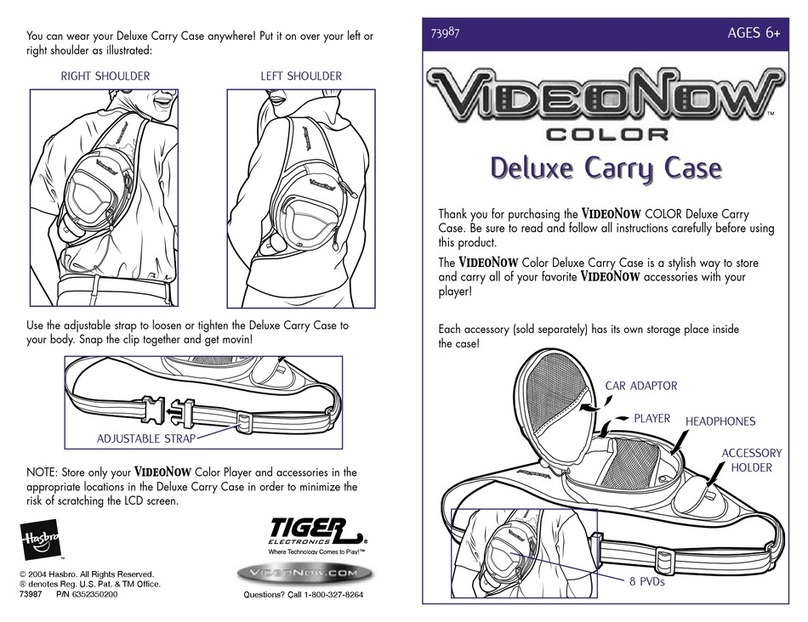
Hasbro
Hasbro Video Now Color Deluxe Carry Case 73987 instruction manual
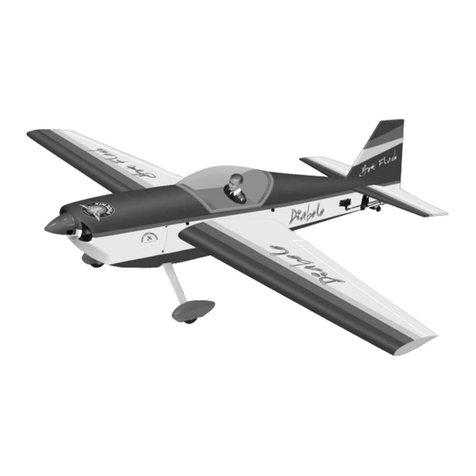
Phoenix Model
Phoenix Model Diabolo Instrction manual

Skynetic
Skynetic Shrike Glider instruction manual
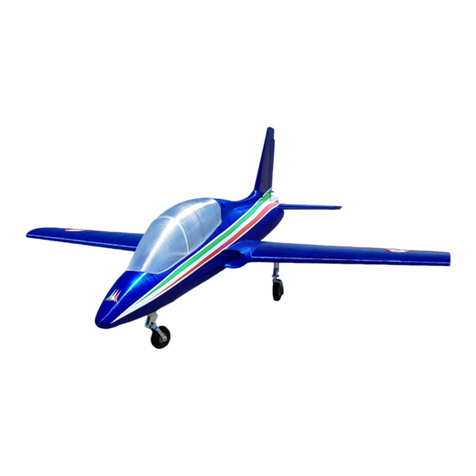
Passione 3D
Passione 3D MB339 Mounting instruction
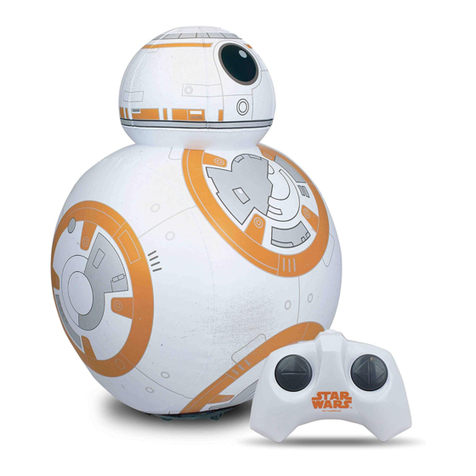
Bladez Toyz
Bladez Toyz BTSW008 operating instructions

LeapFrog
LeapFrog Touch Magic Rockin' Guitar Parent guide & instructions

